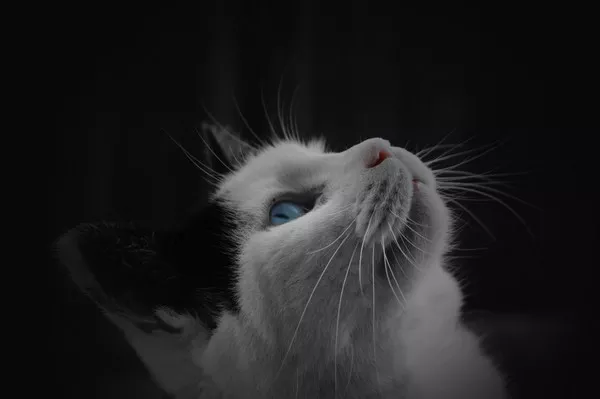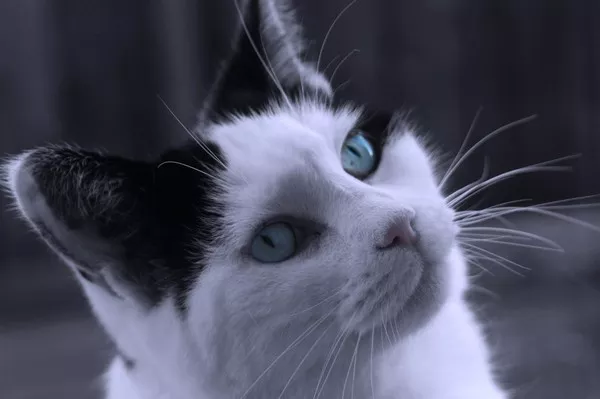Cats are known for their finicky eating habits, but when your feline friend suddenly loses interest in food, it can be a cause for concern. A lack of appetite can stem from various factors, including stress, illness, changes in environment, or simply a preference for a different type of food. As a responsible pet owner, it’s crucial to understand the reasons behind your cat’s loss of appetite and take appropriate steps to address it. This essay will explore the common causes of reduced appetite in cats, provide practical tips on what to give them, and offer guidance on when to seek professional help.
Understanding the Causes of Loss of Appetite
Stress and Anxiety Cats are highly sensitive to changes in their environment. Moving to a new home, the introduction of a new pet or family member, or even a change in routine can cause stress and anxiety, leading to a loss of appetite. It’s important to create a calm and stable environment to help your cat feel secure.
llness or Pain Various health issues can cause a cat to lose its appetite. These include dental problems, gastrointestinal disorders, infections, and chronic conditions like kidney disease. If your cat is showing other signs of illness, such as lethargy, vomiting, or diarrhea, it’s essential to consult a veterinarian.
Food Boredom Just like humans, cats can get bored with the same food day after day. Offering a variety of flavors and textures can help stimulate their appetite. However, it’s important to introduce new foods gradually to avoid digestive upset.
Aging Senior cats may experience a decreased appetite due to age-related changes in metabolism, dental issues, or chronic health conditions. Specialized diets and supplements can help support their nutritional needs.
Recent Vaccinations or Medications Some cats may experience a temporary loss of appetite following vaccinations or the administration of certain medications. If this persists, it’s advisable to consult your vet.
Practical Tips to Encourage Eating
Create a Comfortable Feeding Environment Ensure that your cat’s feeding area is quiet, clean, and free from distractions. Place the food bowl away from noisy appliances and other pets. A comfortable and stress-free environment can encourage your cat to eat.
Offer High-Quality, Palatable Foods Choose high-quality cat food that is rich in protein and nutrients. Wet or canned food can be more appealing to cats due to its strong aroma and moisture content. You can also try adding a small amount of warm water or low-sodium chicken broth to the food to enhance its smell and taste.
Experiment with Different Flavors and Textures If your cat is used to eating dry kibble, try introducing wet food or a mix of both. Some cats prefer pate-style foods, while others enjoy shredded or chunky textures. Offering a variety of options can help you identify your cat’s preferences.
Use Treats and Supplements High-value treats, such as cooked chicken, tuna, or freeze-dried meat, can be used to entice your cat to eat. However, ensure that these treats are given in moderation and do not replace their regular meals. Nutritional supplements, such as probiotics or omega-3 fatty acids, can also support your cat’s overall health and appetite.
Hand-Feed or Use Interactive Toys Hand-feeding can be a bonding experience and may encourage your cat to eat. Alternatively, use interactive toys or puzzle feeders to make mealtime more engaging and stimulating.
Maintain a Consistent Feeding Schedule Cats thrive on routine. Establish a consistent feeding schedule and stick to it. Avoid leaving food out all day, as this can lead to overeating or loss of appetite. Instead, offer meals at specific times and remove any uneaten food after 30 minutes.
Monitor Water Intake Dehydration can exacerbate a loss of appetite. Ensure that your cat has access to fresh, clean water at all times. If your cat is not drinking enough, consider using a water fountain or adding ice cubes to the water bowl to make it more appealing.
When to Seek Professional Help
While occasional loss of appetite is not uncommon, persistent refusal to eat can be a sign of a serious underlying issue. Here are some red flags that indicate it’s time to consult a veterinarian:
Prolonged Anorexia If your cat goes more than 24 hours without eating, it’s important to seek veterinary attention. Prolonged anorexia can lead to a condition called hepatic lipidosis, which is potentially life-threatening.
Weight Loss Rapid or significant weight loss can be a sign of a serious health problem. Monitor your cat’s weight regularly and consult a vet if you notice any changes.
Vomiting or Diarrhea If your cat is experiencing vomiting or diarrhea along with a loss of appetite, it could indicate a gastrointestinal issue. These symptoms should not be ignored and require immediate veterinary care.
Lethargy or Weakness A cat that is lethargic, weak, or showing signs of pain may be suffering from an underlying health condition. Prompt veterinary evaluation is necessary to diagnose and treat the issue.
Behavioral Changes Sudden changes in behavior, such as hiding, aggression, or excessive vocalization, can be indicators of stress or illness. Observing and reporting these changes to your vet can help in making an accurate diagnosis.
Conclusion
A cat’s loss of appetite can be a complex issue with multiple potential causes. By understanding the reasons behind your cat’s reluctance to eat and implementing practical strategies to encourage eating, you can help ensure their health and well-being. However, if your efforts are unsuccessful or if you notice any concerning symptoms, it’s crucial to seek professional veterinary advice. Remember, early intervention can often prevent more serious health complications and help your feline friend return to their normal, happy self.
Related topic:



























